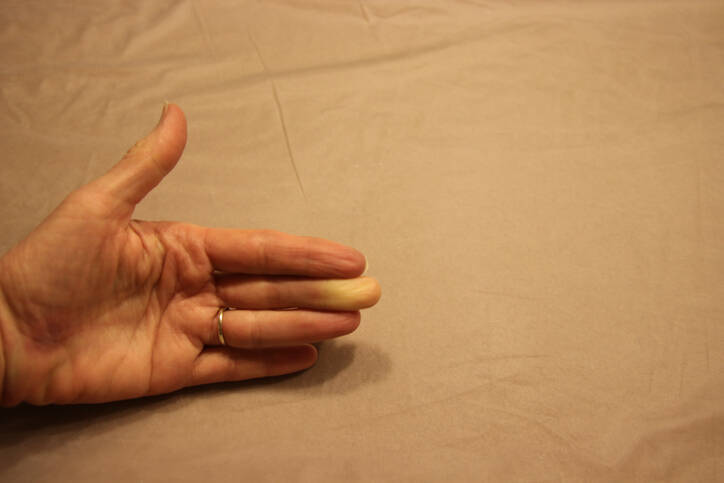- "What Is Raynaud's?". NHLBI. 21 March 2014. Archived from the original on 4 October 2016. Retrieved 1 October 2016.
- "What Are the Signs and Symptoms of Raynaud's?". NHLBI. 21 March 2014. Archived from the original on 5 October 2016. Retrieved 1 October 2016.
- Wigley, FM; Flavahan, NA (11 August 2016). "Raynaud's Phenomenon". The New England Journal of Medicine. 375 (6): 556–65. doi:10.1056/nejmra1507638. PMID 27509103.
- "Who Is at Risk for Raynaud's?". NHLBI. 21 March 2014. Archived from the original on 5 October 2016. Retrieved 1 October 2016.
- Barker, Roger A. (2005). The A-Z of Neurological Practice: A Guide to Clinical Neurology. Cambridge University Press. p. 728. ISBN 9780521629607. Archived from the original on 24 April 2017.
- "What Causes Raynaud's?". NHLBI. 21 March 2014. Archived from the original on 4 October 2016. Retrieved 1 October 2016.
- Holmen OL, Backe B (2009). "An underdiagnosed cause of nipple pain presented on a camera phone". BMJ. 339: b2553. doi:10.1136/bmj.b2553. S2CID 71701101.
- Pistorius MA, Planchon B, Schott JJ, Lemarec H (February 2006). "[Heredity and genetic aspects of Raynaud's disease]". Journal des Maladies Vasculaires (in French). 31 (1): 10–5. doi:10.1016/S0398-0499(06)76512-X. PMID 16609626.
- Wigley, Fredrick M.; Flavahan, Nicholas A. (10 August 2016). "Raynaud's Phenomenon". New England Journal of Medicine. 375 (6): 556–565. doi:10.1056/nejmra1507638. PMID 27509103.
- Gayraud M (January 2007). "Raynaud's phenomenon". Joint, Bone, Spine. 74 (1): e18. doi:10.1016/j.jbspin.2006.07.002. PMID 17218139.
- msdmanuals.com - Raynaud Syndrome
- mayoclinic.org - Raynaud's disease
- medlineplus.gov - Raynaud's Disease Also called: Raynaud's phenomenon
Raynaud Syndrome: Causes of Reduced Blood Flow to the Fingers

Photo source: Getty images
Most common symptoms
Show more symptoms ᐯ
Treatment of Raynaud's syndrome: lifestyle changes
Show moreRaynaud Syndrome is treated by
Raynaud Syndrome is examined by
Other names
Raynaud's, Raynaud's disease, Raynaud's phenomenon, Raynaud's syndrome










